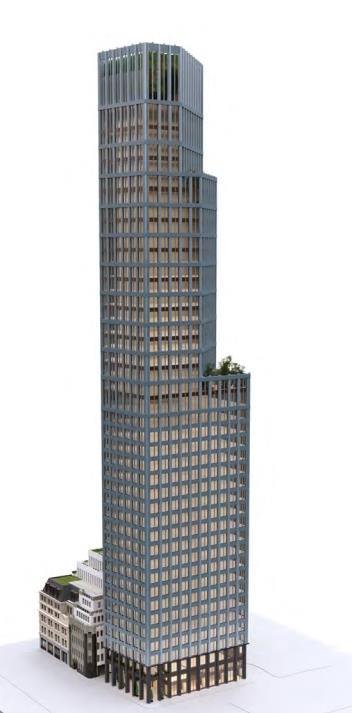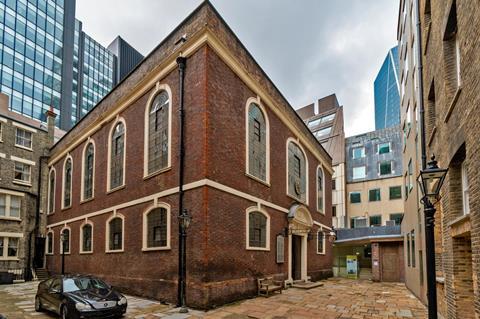Stiff & Trevillion’s Bury House scheme has amassed more than 1,300 objections due to impact on neighbouring grade I-listed Bevis Marks Synagogue
Angela Rayner has put plans for a 43-storey office tower in the City of London on ice after it amassed more than 1,300 objections from members of the public.
The secretary of state has issued an Article 31 order preventing councillors from granting permission to the Bury House scheme, located near the Gherkin.
Designed by Stiff & Trevillion for developer Bentall Green Oak, the scheme would see the demolition of the 1960s Bury House to make way for the tower and an extension of the grade II*-listed Holland House.

The application is the second version of the proposals, five storeys shorter than a previous submission which was rejected in 2021 due to concerns over the impact of the building’s height on the Tower of London and the neighbouring Bevis Marks Synagogue.
But the site is now located in the new Creechurch conservation area created by the City last year to protect the grade I-listed synagogue, which is the UK’s oldest synagogue in continuous use since its construction in 1701.
Multiplex is providing construction advice on the scheme, replacing Mace which had been appointed to the role on the former proposals.
The rest of the project team includes cost consultant RLB, structural engineer Thornton Tomasetti, sustainability consultant Hoare Lea, facade consultant Arup and planning consultant DP9.
In a letter to the City of London‚Äôs principal planning officer, the Ministry of Housing, Communities and Local Government directed the council not to approve the application ‚Äúwithout specific authorisation‚ÄĚ from Rayner.
It added that the direction would enable Rayner to consider whether or not take control of the planning decision by calling in the scheme.
Historic England, which called for the original application to be refused in 2021, is among the heritage groups which had been calling for the City to refuse the tower.
The government‚Äôs heritage advisor has now said the revised scheme is ‚Äúworse than that refused from a heritage perspective‚ÄĚ because of its impact on the new conservation area and proposed amendments to Holland House, an unusual 1910s building designed to look like the bow of a ship.
In a letter sent into the application last week, Historic England said the scheme would have an overbearing and overshadowing impact on the Bevis Marks Synagogue and reduce the visibility of the moon above its courtyard.

This would impact the ability of the Sephardi community to practice the Kiddush Levana ritual, which consists of prayers performed outside at night to bless the new moon.
Historic England’s objection came after the application provoked 1,373 letters of objection from members of the public, against 66 letters in support.
Many of the objections came from members of the Jewish community, criticising the impact which the tower would have on religious practices which have taken place on the site for more than three centuries.
One objector said the tower would ‚Äúcompletely overwhelm‚ÄĚ the synagogue, adding: ‚ÄúIt is very unlikely that such a building would be allowed next to St Paul‚Äôs Cathedral, so why is the synagogue not afforded the same protection?
‚ÄúThe Bevis Marks Synagogue has the same significance for the Jewish community as St Paul‚Äôs Cathedral or Westminster Abbey have for the wider community.‚ÄĚ
Other objectors to the plans include Historic Royal Palaces, Save Britain’s Heritage and the 20th Century Society.



























No comments yet